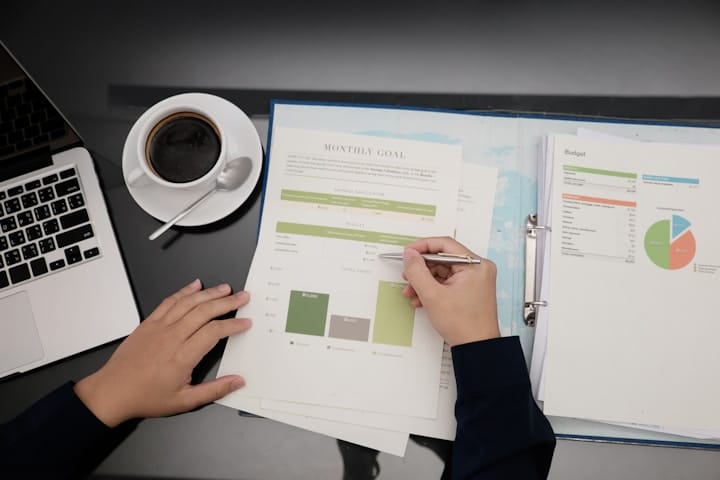Introduction
The shift to remote work has highlighted the need for effective management strategies and tools to maintain productivity among distributed teams. As organizations adapt to this new landscape, leaders must be equipped with innovative solutions to foster collaboration, communication, and accountability. By implementing the right tools and techniques, remote teams can achieve high levels of productivity while navigating the challenges posed by geographical separation.
Remote work has become a staple in modern business, emphasizing flexibility and accessibility while challenging traditional management practices. This blog post will explore various essential tools, strategies, and techniques that can empower managers and teams to excel in a remote work setting, ultimately driving productivity and success.
Skip Ahead
- Understanding the Unique Challenges of Remote Work
- Essential Tools for Remote Team Communication
- Project Management Tools for Enhanced Collaboration
- Time Management Techniques for Remote Workers
- Building Trust and Accountability in Remote Teams
- Creating a Positive Remote Work Culture
- Regular Check-Ins and Feedback Loops
- Evaluating Remote Team Performance
Understanding the Unique Challenges of Remote Work
Before implementing tools and strategies to boost remote team productivity, it is essential to understand the unique challenges that remote work poses. Key challenges include:
- Communication Barriers: Without face-to-face interactions, misunderstandings can arise, and the dynamics of the team may be altered. Verbal and visual cues that are commonly present in office environments are often missing.
- Isolation: Remote workers may experience feelings of isolation, which can impact morale and motivation. Lack of social interaction can hinder collaboration and team bonding.
- Distractions: Home environments can be rife with distractions, making it difficult to concentrate. Balancing personal responsibilities with work obligations is a common struggle.
- Differing Time Zones: For teams spread across different time zones, scheduling meetings and fostering real-time collaboration can present significant difficulties.
Understanding these challenges allows leaders to tailor their approaches and tools to bridge the gap between remote team members, fostering a productive and collaborative atmosphere.

Essential Tools for Remote Team Communication
Effective communication is paramount for remote team productivity. Here are several essential tools that can enhance communication within distributed teams:
1. Slack
Slack is a popular communication platform that enables teams to communicate in real time through channels, direct messages, and file sharing. It supports integrations with many other tools, making it a versatile option for remote teams.
2. Microsoft Teams
Microsoft Teams combines chat, video conferencing, and file storage, providing a comprehensive communication solution. Teams can collaborate seamlessly in one platform.
3. Zoom
Zoom has gained significant popularity for its video conferencing capabilities. The platform is easy to use and offers features such as breakout rooms, screen sharing, and recording, enhancing team collaboration.
4. Google Workspace
Google Workspace includes tools like Google Docs, Sheets, and Meet, which facilitate real-time collaboration and communication. It is an all-in-one solution that empowers teams to work effectively.
Implementing communication tools that suit your team’s preferences can greatly enhance collaboration and ultimately drive productivity.
Project Management Tools for Enhanced Collaboration
As remote teams work on various projects, having the right project management tools is crucial. These tools help teams stay organized, manage tasks, and track progress efficiently:
1. Trello
Trello uses a visual approach to project management with boards, lists, and cards. It allows team members to track task assignments and project statuses clearly.
2. Asana
Asana is another powerful project management tool that provides a structured way to assign tasks, set deadlines, and monitor project progress. It also enables teams to communicate about specific tasks.
3. Jira
Jira is specifically designed for software development teams, allowing teams to track issues, manage projects, and enhance workflow. It is highly customizable to fit the needs of various teams.
4. Monday.com
Monday.com is an intuitive work operating system that empowers teams to plan, track, and deliver projects efficiently. Its customizable workflows can accommodate diverse team needs.
By leveraging project management tools, teams can streamline tasks, reduce confusion, and foster greater accountability.

Time Management Techniques for Remote Workers
Time management is critical for remote workers to maximize productivity. Here are techniques that remote team members can implement:
1. Pomodoro Technique
The Pomodoro Technique encourages focused work through timed intervals (typically 25 minutes) followed by short breaks. This method can help remote workers maintain concentration and combat distractions.
2. Time Blocking
This technique involves planning specific blocks of time for various tasks throughout the day. By dedicating time to particular activities, remote workers can improve focus and efficiency.
3. Daily Stand-up Meetings
Short, daily stand-up meetings can help teams align on goals, discuss progress, and address any blockers. These quick check-ins foster accountability and engagement.
4. Set Clear Priorities
Remote workers should identify and rank tasks by importance each day. Using tools like the Eisenhower Matrix helps prioritize tasks based on urgency and importance.
By adopting effective time management techniques, remote workers can balance their workload more efficiently, ultimately enhancing productivity.
Building Trust and Accountability in Remote Teams
Trust and accountability are essential elements that contribute to a productive remote work environment. Here are ways to foster these qualities:
1. Establish Clear Expectations
Clearly defined roles, responsibilities, and expectations set the tone for accountability within the team. Managers should communicate what is expected to ensure that team members understand their responsibilities.
2. Encourage Openness
Promoting a culture of openness allows team members to share concerns or challenges they may be facing in their work. Creating safe spaces for communication can help to build trust within the team.
3. Recognize Achievements
Acknowledging the contributions and successes of team members can nurture a positive work atmosphere. Regularly recognizing accomplishments fosters motivation and encourages ongoing engagement.
4. Create Transparent Processes
Having transparent processes for project tracking and progress updates can help build accountability among team members. Utilizing project management tools can enhance visibility into individual contributions.
By prioritizing trust and accountability, managers can empower remote teams to deliver consistent results and maintain high productivity levels.
Creating a Positive Remote Work Culture
Cultivating a positive remote work culture is critical for team morale and productivity. Employers can take the following steps to enhance workplace culture:
1. Foster Connection
Encourage team bonding through virtual events, such as coffee breaks, game nights, or team-building exercises. These activities help remote workers feel connected to their colleagues.
2. Support Work-life Balance
Promote a healthy work-life balance by respecting personal time and encouraging employees to disengage after work hours. Understanding individual circumstances can enhance well-being and satisfaction.
3. Encourage Professional Development
Support continuous learning by providing access to training resources, workshops, and professional development opportunities. Encouraging growth fosters job satisfaction and productivity.
4. Solicit Feedback
Regularly seek feedback from team members regarding their experiences and suggestions for improvement. Listening to their concerns and being receptive to change creates a supportive environment.
By fostering a positive remote work culture, organizations can improve team dynamics and boost overall productivity.

Regular Check-Ins and Feedback Loops
Regular check-ins and feedback loops are fundamental for maintaining productivity within remote teams. Consider these practices:
1. One-on-One Meetings
Scheduling regular one-on-one meetings between managers and team members provides opportunities to discuss progress, concerns, and goals. This individualized attention fosters accountability and support.
2. Feedback Mechanisms
Establish formal and informal feedback mechanisms, such as surveys or suggestion boxes, to gather insights from team members. This approach helps identify areas for improvement and enhances communication.
3. Retrospectives
Conducting retrospectives at the end of projects allows teams to reflect on what went well and what needs refinement. Incorporating lessons learned into future projects can drive continuous improvement.
4. Use Collaboration Tools for Transparency
Utilize team collaboration tools to create transparency in communication and project management. Ensuring visibility into tasks and responsibilities can enhance team accountability.
Regular check-ins and feedback promote stronger relationships within remote teams, ultimately supporting higher productivity levels.
Evaluating Remote Team Performance
To maintain productivity effectively, organizations must evaluate remote team performance adequately. Here are strategies for evaluation:
1. Set KPIs and Metrics
Defining key performance indicators (KPIs) allows organizations to measure success objectively. Establish metrics related to productivity, collaboration, and project completion.
2. Utilize Analytics Tools
Leverage analytics tools from project management platforms to monitor progress. Tools like Trello and Asana can provide valuable insights on team performance and project timelines.
3. Conduct Performance Reviews
Regular performance reviews provide an opportunity for managers to assess individual and team performance. This process can help identify strengths, weaknesses, and areas for further development.
4. Encourage Self-Assessment
Encouraging team members to assess their own performance fosters accountability and helps identify personal goals. This practice contributes to professional development and productivity.
By implementing consistent evaluation methods, organizations can identify areas for improvement and celebrate team accomplishments.
Conclusion
Navigating operational challenges and maintaining productivity in remote teams can be achieved through effective management tools and techniques. By understanding the unique challenges of remote work, leveraging communication and project management tools, and fostering a positive work culture, organizations can set their distributed teams up for success.
The integration of time management strategies and performance evaluation ensure that remote teams remain focused and aligned with organizational goals. By prioritizing trust, accountability, and connection, businesses can create an environment that encourages collaboration, productivity, and overall well-being.
Remote work is here to stay, and embracing the right tools and techniques can transform remote teams into high-performing units, capable of achieving remarkable results despite geographical distance.







